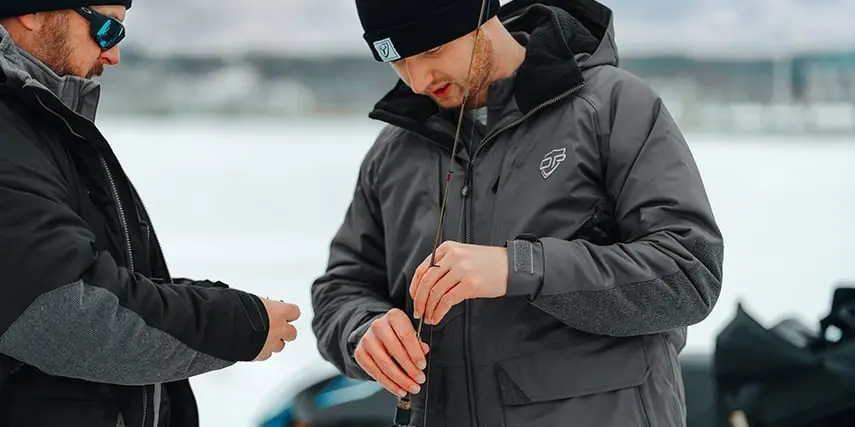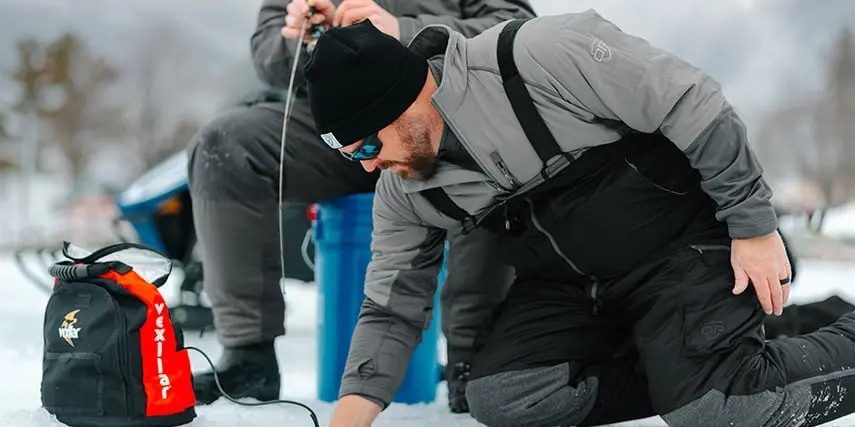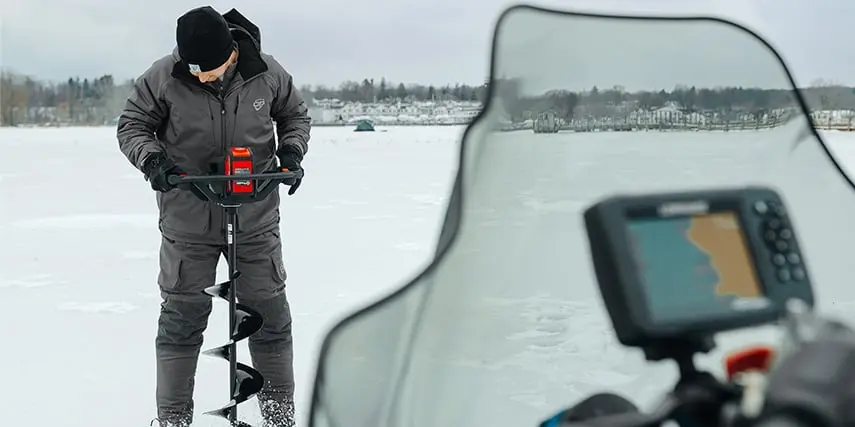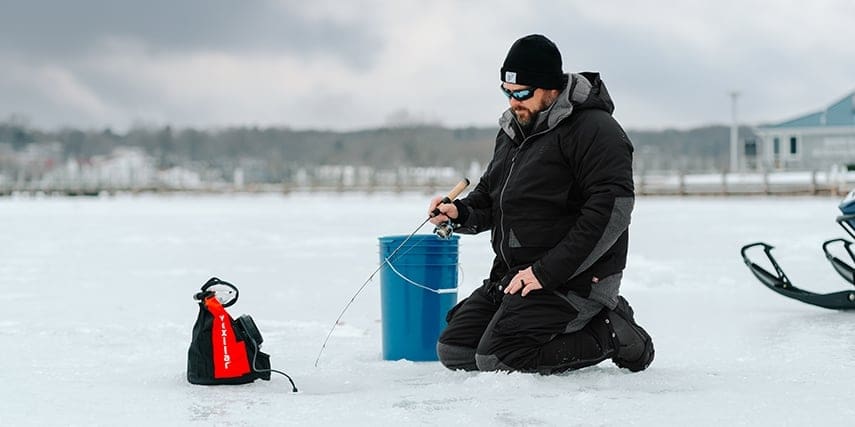A new year often brings New Year’s resolutions, some of which include trying new things; if you are a die-hard fisherman or know someone who is, ice fishing may fit the bill. Traveling to the northern United States or Canada this winter to try ice fishing for the first time can be a great way to spend the winter months when there is not much to do outdoors.
During the colder months, fish become hungry once the northern freshwater lakes are frozen with thick snow and ice. Due to a plummet in their energy levels during the cold, they want an easy meal on which they don’t have to exert much effort. When cold-weather fish are slow to move, they often become more willing to feed on slow-presented baits or lures that don’t require much effort to catch and consume. Thus, being the reason why ice fishing can result in a fun way to catch fish. Continue reading to find out if ice fishing should be added to your New Year’s resolution list.

Most Common Fishing Method
Before beginning an ice fishing endeavor, it is essential to gain knowledge of the most common methods to catch fish. Most ice fishing-specific rods are much shorter than standard rods, typically measuring two feet or shorter. As for the reel, a smaller ultralight design is preferred. A smaller reel provides excellent control when jigging and usually features highly efficient drag systems to fight fish while reeling them to the surface. The most common method of ice fishing is done with a smaller specialized rod and reel to help detect light bites and catch fish through a small circle in the ice.
Once a rod and reel have been obtained, it is vital to know what types of baits and lures to use. The most effective lures are spoon-style jigs. The jigging spoons work great for small panfish such as perch and larger fish such as walleye, pike, and musky. Anglers prefer several different shapes, sizes, and colors of spoons, yet trial and error while fishing is the best way to find out what works.

Where To Find Fish
To become successful when ice fishing, it is crucial to have a plan in place before drilling a small hole in the size in random locations. Due to slightly warmer temperatures, most fish typically stay in deeper water during the cold. However, some winter fish swim to more shallow water when looking for food, such as baitfish.
Because of the uncertainty of fish being deep or shallow, many anglers target steep shorelines that go from shallow to deep. These areas, often referred to as transition areas, provide the fisherman with the ideal location because fish congregate where they have everything they need, such as warmer water and food.

Basic Gear
After finding an area where fish are most likely located, it is time to drill a hole in the thick ice. Therefore, the first most needed gear choice is an auger. For the fishing lure to find its way through the thick ice, an adequate hole must first be drilled into it, typically in a ten to twelve-inch circle. This is often achieved using a hand-held or motorized auger that spins its way through until it reaches the water. Additional gear for ice fishing includes smaller items such as an ice scoop and skimmer to help remove ice from the hole after drilling with the auger.
Now, you are ready to fish, yet one of the most challenging tasks when ice fishing can become staying warm. Because the fishing takes place on a frozen lake with several inches of ice below, it will be bitterly cold. To help stay warm, cold-weather gear such as Blocker’s Outdoor Pursuit Reliant Parka and bibs should be worn. This combination features 200 grams of thermal-mapped Primaloft Silver insulation and microfleece lining that keeps the fisherman warm in the harshest temperatures. Plus, it is waterproof, breathable, and windproof while featuring a tough outer layer that can withstand whatever elements the fishing adventure throws your way.
Safety
Due to ice fishing taking place on the top layer of a frozen body of water, it is critical to stress safety when fishing. Anytime frozen water is traversed, safety is imperative. As a rule, you should never step onto frozen water unless it is thicker than four inches. Anything less runs the risk of the angler breaking the ice and falling into frigid waters that can quickly turn deadly.
Some ice anglers use small tents or shelters to keep warm when fishing. It is imperative to ensure proper ventilation is available in a shelter with a gas heater. If not properly vented, carbon monoxide poisoning can occur. Have fun while ice fishing, but always keep safety precautions at the forefront of the journey.

